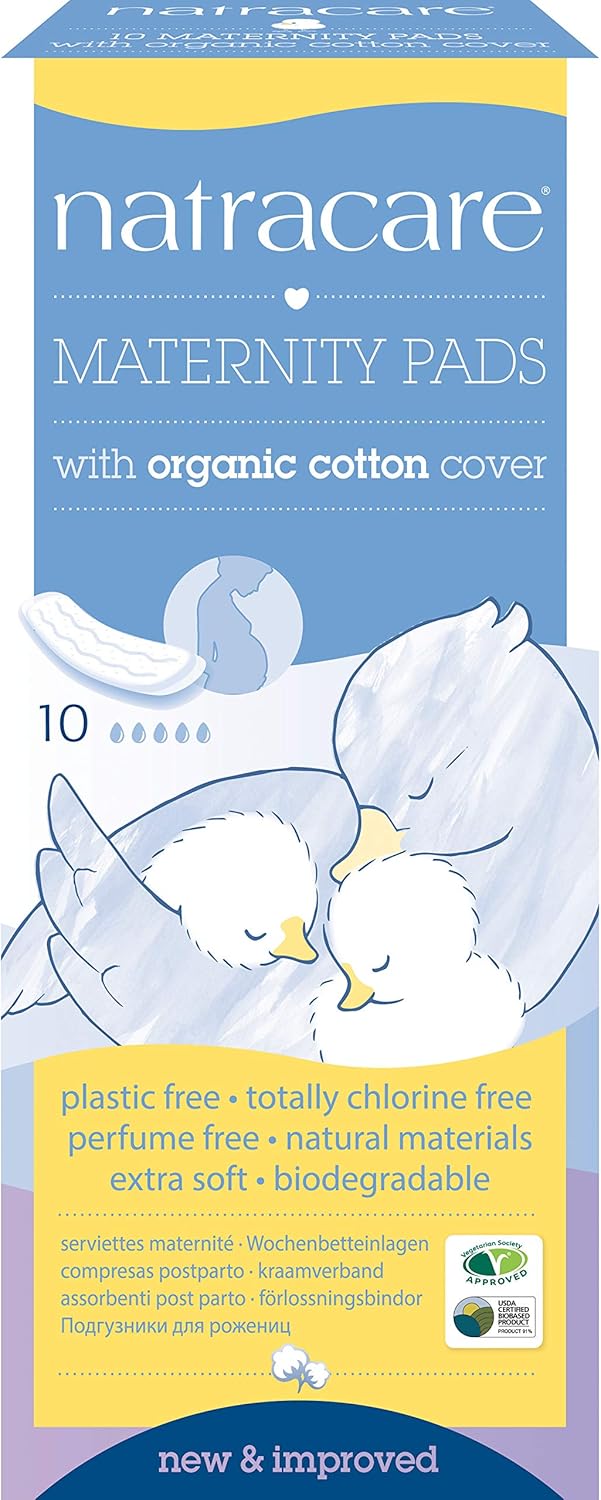About this deal
Groom, K. M., et al. (n.d.). Chapter 56: The management of secondary postpartum hemorrhage. Postpartum Hemorrhage: 2nd Edition.
A person should change their maternity pad when it is full. The heaviness of the flow will determine how often a person needs to change pads. your little one decides to make an early entrance. Things to consider when buying maternity pads... Although they aren't nearly as cute as your baby's going-home outfit, postpartum pads are an essential item to include in your hospital bag.Another big plus is that maternity pads generally don’t use the fine mesh top layer often found on sanitary towels as this can cause a lot of irritation to stitches or any small tears. How many maternity pads will I need? It's true that during your stay in the hospital after giving birth, the nurses will supply you with comfy mesh underwear and huge hospital-grade pads. But not all women are fans of this particular combination, and many prefer to have their own supplies either for the hospital or once they head home. Why do you need pads after giving birth? As with menstrual pads, there is something for everyone and it is always worth remembering to be open minding. The type of maternity pad that works for you will not only depend on how much you bleed after birth but will depend on what type of labour and birth you have. It is always best to have a bit of a collection which allows you to try different Maternity pads (or maternity towels) will soak up the bleeding that comes from your uterus, mostly from where your placenta was attached. Bleeding is at its heaviest in the few hours immediately post-birth but will ease off to a more manageable amount as your body begins to heal. Medical News Today has strict sourcing guidelines and draws only from peer-reviewed studies, academic research institutions, and medical journals and associations. We avoid using tertiary references. We link primary sources — including studies, scientific references, and statistics — within each article and also list them in the resources section at the bottom of our articles. You can learn more about how we ensure our content is accurate and current by reading our editorial policy.
Classic pads– These are very basic pads with no frills or features. These are generally used towards to end of your postpartum bleeding or when it is light. Then tend to be the most inexpensive option and are readily available but Most women bleed after giving birth. It is common to bleed for four to six weeks following childbirth, but a person can bleed for up to 12 weeks. How many maternity pads do you need? Lochia can last for up to six weeks, although it's typically heavy only for about a week to 10 days after delivery. You'll see it evolve as it changes from being red to pink to brown, and finally a yellowish white. Every woman experiences lochia differently, however, so you might not need postpartum pads for the same amount of time as another new mom. What to consider when buying postpartum padsComfort: Maternity pads should be super soft to the touch for ultimate comfort. High absorbency is also key to ensuring that you feel as dry and clean as possible. Although maternity pads are not the most discreet sanitary products, don’t forget that their main purpose is to keep you comfortable postpartum, and help you on your road to recovery. Organyc’s breathable cotton pads are ideal for mothers who would prefer a maternity pad made from organic and sustainable materials but who, for whatever reason, can’t consider reusable pads. These ultra-clean, eco-friendly pads are fragrance-, latex- and chlorine-free, making them a superb option for those who prefer to use products with minimal harmful additives. As well as being good for the planet, they’re also designed to avoid causing irritation to sensitive skin or stitched-up areas that need extra care.
Some drugs may have Authority Required (Streamlined) status which does not require an explicit approval from Medicare, instead the doctor can use the Authority code found in the published Schedule for a given drug/indication. Incontinence underwear.Also known as “adult diapers,” these postpartum pads make it easy to get protection from all angles. https://www.nct.org.uk/life-parent/your-body-after-birth/bleeding-after-birth-10-things-you-need-know Maternity pads have been designed for a simple reason, because regular sanitary towels and pads aren’t up to the job in the weeks after you’ve given birth. You need all the protection you can get during the postpartum period as the blood flow Maternity pads have been designed for a reason: simply put, regular sanitary towels aren’t up to the job in the weeks after you’ve given birth. You need all the protection and support you can get during the postpartum period as the blood flow is quite heavy during this time. Maternity pads tend to be a lot more absorbent than regular sanitary towels and are often longer and wider, too, meaning you won’t constantly have to be changing your pad throughout the day.Prescriptions must be written on an Authority Prescription Form, and the approval number must be noted on the prescription. Pharmacists cannot dispense the item as a pharmaceutical benefit unless it has been approved by Medicare Australia (indicated by the presence of the approval number).
 Great Deal
Great Deal 